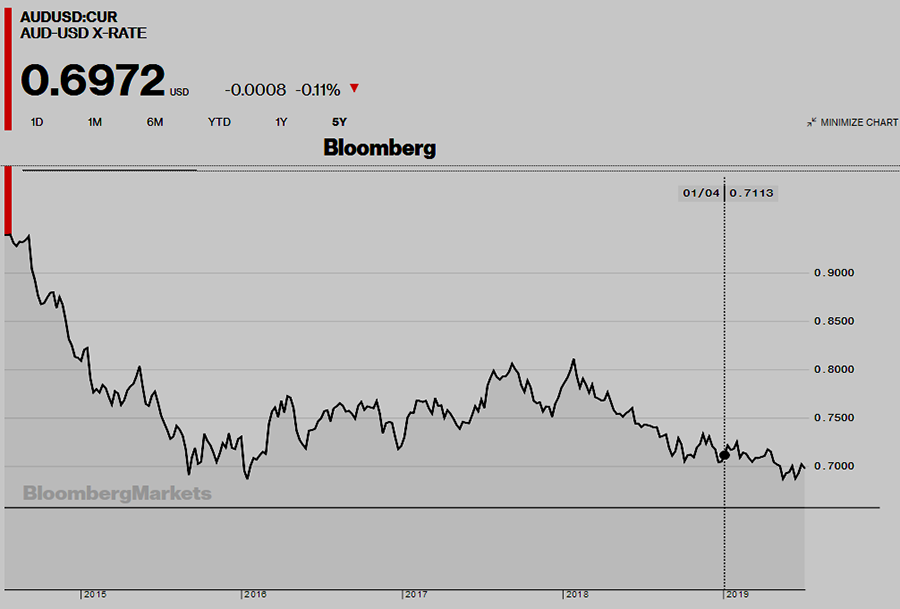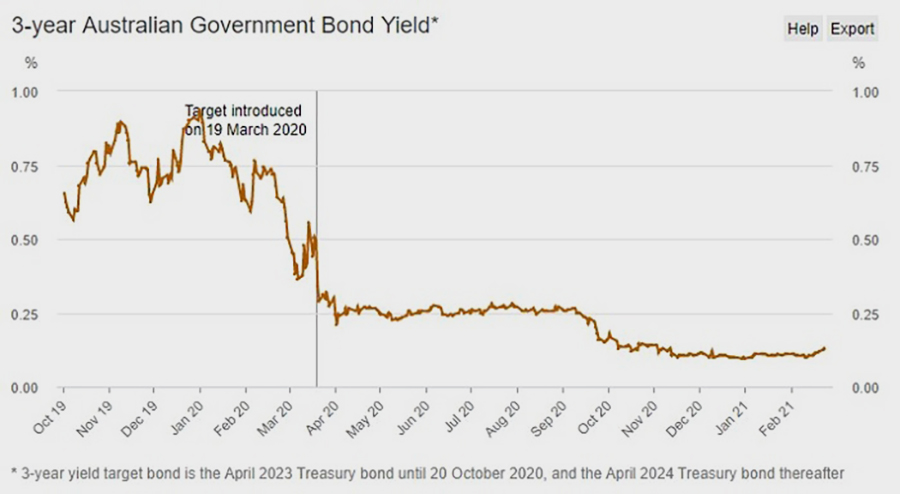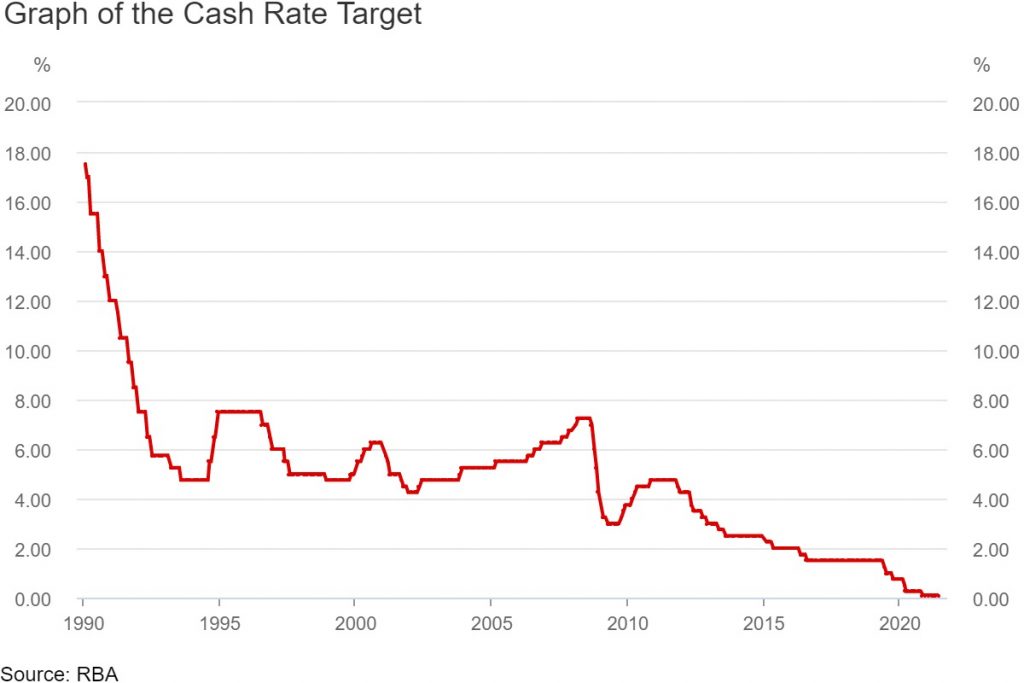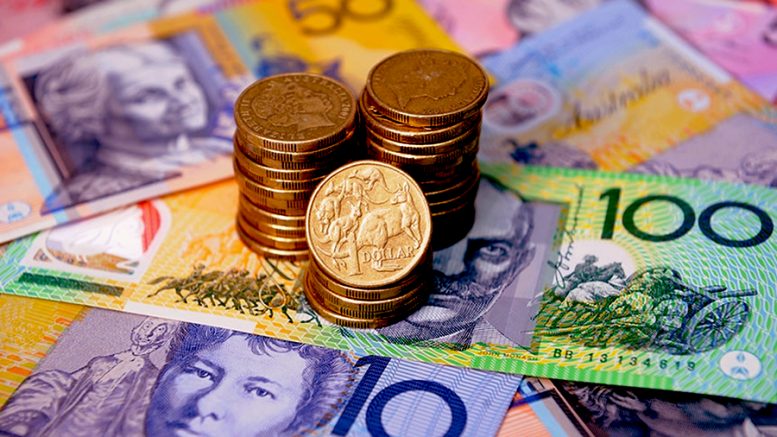Contributed by Joe Montero
The Australian dollar is getting decidedly shakier and on a downward trend in its exchange rate with other currencies.
Inside Australia, a falling dollar means less earned from exports and what we import becoming more expensive. Having an economy that relies heavily on the export of mineral resources and farm produce and the importation of most of our manufactured goods, means the impact is big.
Through this year our dollar has sat at between 72 to 74 cents to the US dollar. It is now at 70 cents. This is down from 75 cents and continues the downward trend over the last decade, as is shown on the graph below

This creates adds inflationary pressure. Inflation means that everything starts to cost more, and this is going to be felt all the harder, in an economy where real income is not rising for most people.
According to the Melbourne Institute, the rate of inflation this year has been at 3.1 percent, although even this tends to masque the real change in the cost of living. This is a problem of how its measured.
Stagnant wages and concerns over Covid have dampened demand in the Australian market and kept inflation lower than it would otherwise be. The question is how long will this last?
A traditional counter is to soak up inflationary pressure through the sale of government bonds. This takes money out of circulation. This is not an option now. The returns on these (yield) and therefore interest from investors has also been heading in the wrong direction. The trend in the three-year bonds is shown in the graph below.

Source: The Reserve Bank of Australia
There is no doubt that falling prices for iron ore, coal, and gas are having an impact. So are a world experiencing greater uncertainty in financial markets and lack of confidence over where Australia is heading.
Another pointer is the extremely low interest rate. In Australia it holds near to zero, while in some other countries, it has nudged upward a little. This suggests that investors have greater confidence in putting their money elsewhere. This too has been a longer-term problem.

Most of the investment comes from the United States and those who are behind it are choosing to turn from places like Australia and take advantage of opportunities at home. A big part of this is big government subsidies and contracts. The Biden administration is investing in a market led recovery form the problems of the United States, and to drive ambitions in the global economy. Australian dollars are being exchanged for American dollars, and Australia’s fate is part of the collateral damage.
Australia’s currency is also falling against other major currencies, which suggests that there is a more fundamental problem at play.
Pressure on the Reserve Bank to raise the interest rate to encourage foreign investors to return to Australia is mounting. Raising the rate may or may not work because the global economy had become less certain than it was. If it does work, it will add to the cost of borrowing and therefore inflation.
The banks have already begun to raise their mortgage rates.
All of this is what is taking place on the surface. Beneath this, is the reality of a falling rate of return on investment hitting the global economy and taking a particular form in Australia. Although not directly reported, we know this from the available data, making it possible to calculate the ration between per dollar return on investment.
Fuelling this fall, is a structural economic change, emanating from a fall in the value generated by the real economy, the disintegration of manufacturing and the rise in the dominance of the financial sector.
The nation survives on credit and lacks the means to cover it, and this creates greater economic instability and investors seek new sources of profit. Where this will end, we don’t know yet.
This does not mean that Australia can’t do anything to change the situation. Change won’t come overnight. But a start can be made by decoupling form over dependency on foreign investors, imposing adequate regulation of financial flows, and generating home grown public and private investment in the Australian real economy. There must be a shift from over reliance on the export of iron ore, coal, and gas, towards manufacturing and lifting the wages share of national income.
A change in direction on this scale will work to counter the pressures pulling down the Australian dollar, and a growing real economy will create more work and help address the deeper problem of as fall in the rate of return on investment.


Be the first to comment on "The falling Australian dollar is a problem of a weakening economy"